This article was medically reviewed by Cristian Macau, DDS. Dr. Macau is an oral surgeon, periodontist, and aesthetician at Favero Dental Clinic in London. He received his DDS from Carol Davila University of Medicine in 2015.
There are 13 references cited in this article, which can be found at the bottom of the page.
This article has been viewed 123,763 times.
White spots on teeth are caused by the loss of mineral content from the surface of the teeth, called “enamel.” This damage is known as hypocalcification, and the spots are called hypoplasia. Since the white spots mean the enamel of your teeth is damaged, these spots can also be the first sign of tooth decay or the formation of a cavity. There are many ways to treat these spots; however, it is also important to try to prevent these spots from forming in the first place.
Steps
Treating Your Teeth at Home
-
1Make your own remineralizing toothpaste. Reintroducing nutrients like calcium into your teeth may help strengthen them. One way to get rid of white spots and other signs of damage on your teeth is to make a remineralizing toothpaste that is rich in calcium and other basic elements. Ingredients like baking soda will also act as abrasive elements to scuff off the white spots and normalize the pH balance in your mouth.[1] To make remineralizing toothpaste:
- Combine 5 tablespoons (74 mL) of calcium powder, 2 tablespoons (30 mL) of baking soda, and 1 tablespoon (15 mL) of food-grade diatomaceous earth in a small bowl. You can also add 3 tablespoons (44 mL) of xylitol powder to help keep the paste from tasting too bitter.
- Add enough coconut oil to the powdered ingredients to form a paste-like consistency. This is typically about 3 – 5 tablespoons (44 – 74 mL) of coconut oil.[2]
- If desired, you can also add one or two drops of food-safe essential oil for taste. Popular options include mint, lemon, and cinnamon.
- Store the paste in a sealed jar, and brush your teeth with it two to three times daily.
-
2Create a homemade remineralizing tooth powder. If you prefer to use tooth powders to brush your teeth instead of toothpaste, you can create a homemade remineralizing powder using bentonite clay, which has the ability to draw out heavy metals and toxins from your teeth and mouth and restore the pH balance of your mouth. The clay is rich in minerals like calcium, magnesium, and silica, which help get rid of white spots on your teeth.[3] To make remineralizing tooth powder at home:
- Combine 4 tablespoons (60 mL) of bentonite clay, 3 tablespoons (44 mL) of calcium powder, 1 tablespoon (15 mL) of cinnamon powder, 1 teaspoon (5 mL) of clove powder, 1 tablespoon (15 mL) of xylitol powder, and 1 tablespoon (15 mL) of baking soda in a small bowl.
- If desired, you can also add 2 teaspoons (10 mL) of mint leaf powder or a few drops of peppermint or cinnamon food-safe essential oil to improve the flavor of the tooth powder.
- Store the powder in a sealed jar, and apply to the teeth with your finger or a toothbrush two to three times daily.
Advertisement -
3Rinse with green tea a few times each day. Green tea is a natural ingredient found in a number of homeopathic remedies, and it also has properties that can help get rid of white spots on your teeth. Green tea is a mineral- and vitamin-rich food source that may help remineralize teeth. Green tea also contains antibacterial catechins, which may prevent the buildup of plaque. Green tea is also a natural source of fluoride.[4] To use green tea:
- Soak one tea bag of green tea leaves in 1 – 2 cups (0.2 – 0.5 L) of warm water, keeping the leaves submerged for about five minutes before removing the bag.
- Let the tea cool till it tolerably warm, but not too hot. When it has cooled, take a swig of tea and swirl it all around your mouth for 30 seconds to one minute. Repeat until all of the tea is gone.
- Repeat this process about two to four times daily.
- Keep in mind, however, that green tea can stain your teeth gray if you drink too much of it, so use this method sparingly.
Seeing a Dentist for White Spot Removal
-
1Have your teeth professionally bleached. A dentist can look at the white spots on your teeth and determine if bleaching may help and whether this procedure is safe based on the current state of your enamel. Your dentist will also be able to seal the enamel with fluoride and other enamel treatments once the whitening process is finished. This will help to strengthen your teeth.[5]
-
2Ask about air abrasion techniques. Another common way dentists remove white spots from the teeth is by gently scuffing the spots from the teeth with an abrasive material, usually baking soda. This is best for white spots that are small, as too much abrasion on the teeth will wear away a thin layer of enamel.[6]
- The procedure uses a special device that blows crystal particles directly at the calcium deposit. The abrasive particles gently lift away the calcium deposit. The spot is then fixed with filling to cover the calcium deposit and seal the enamel.
-
3Consider chemical microabrasion. Like air abrasion, the goal of chemical microabrasion is to remove the white spot by gently removing the calcium deposit causing the discoloration. This is appropriate for small- to medium-sized white spots only, because applying the abrasive chemicals to larger areas will only damage the tooth further.[7]
- During the procedure, the dentist applies a special acid that eats away the calcium deposit on the tooth. The acid is only applied directly on top of the discolored spots to avoid extensive enamel damage. Then, the dentist will drill in the spots post-etching to seal the enamel of the teeth and protect it from further damage.
-
4Have your spots treated with the Resin Infiltration System. During this procedure, the dentist will use a special resin gel to open the pores of the tooth where the white spots are located. After the resin has penetrated and treated all of the levels of the discolored teeth, the dentist will cure the resin with a special light. After about 15 – 20 minutes, the white spots should blend with the remaining tooth enamel. This procedure also blocks enamel-eating acid from penetrating the tooth and helps preserve the tooth from additional decay and future cracks in the enamel structure.[8]
-
5Undergo topical remineralization therapy. These treatments are similar to homemade remineralization remedies, except that they contain prescription only ingredient levels. These treatments work faster than home remedies by using prescription pastes and gums to reintroduce high levels of minerals to treat the microscopic holes creating the white spots.[9]
- These products contain high levels of fluoride that help treat the white spots, and they can also help prevent future cavities and spots from forming.
- Some products options include casein phosphopeptides (CPP) and amorphous calcium phosphate (ACP) powders, gums, and pastes.
Preventing White Spot Formation
-
1Practice good oral hygiene. Because white spots are also an indication of enamel damage and early stages of tooth decay or can also be produced by fluoride ingestion at an early age (childhood fluorosis), preventing these spots from forming is almost always preventable with regular brushing and flossing. Improving your dental hygiene habits will reduce the likelihood of getting white spots in the future.[10] Some tips to help you have great oral hygiene habits include:
- Always brush your teeth after waking up, after eating, and before going to bed.
- Check the fluoride content of your toothpaste. You need enough fluoride to reduce acid and balance out your mouth's pH levels, but you don’t want to have so much fluoride that it is damaging. Try to aim for amounts of fluoride between 1,000 and 1,500 ppm unless your dentist says otherwise.
- Floss every night. If you have difficulty using standard floss, try using a pre-threaded flosser, instead.
- Visit the dentist every six months. Good care at home can prevent most problems, but a dentist can diagnose early signs of plaque buildup and other related issues.
-
2Avoid foods and drinks that damage your teeth. Certain foods can damage tooth enamel and make the mouth acidic and dry, allowing more bacteria to grow as a result. This can damage the enamel on your teeth and allow harmful bacteria to infiltrate the pores of your teeth, leeching nutrients and minerals from the teeth and causing white spots. Some tips to reduce your intake of these products include:[11]
- Avoid sugary drinks, especially carbonated drinks like soda. Also be wary of candy and products that contain artificial sweeteners.
- If you need to sweeten something, opt for natural alternatives like honey or maple syrup, and use as little as possible.
- If you do consume anything that is high in sugar or carbohydrates, be sure to rinse your mouth with water immediately, then brush after about 30 minutes.
-
3Eat mineral-rich foods to remineralize teeth. In addition to remineralizing your teeth with home remedies or in-office professional treatments, another great way to prevent white spots is to eat foods that are heavy in teeth strengthening minerals.[12]
- By consuming vitamin D- and calcium-rich foods like milk, cheese, and yogurt, your teeth and body will absorb nutrients that help make your teeth strong and prevent white spots.
- Also look for foods that are high in magnesium, like dark leafy greens, nuts, seeds, fish, soybeans, and avocado, because magnesium helps the body absorb and retain more calcium.
-
4Drink plenty of water. Staying hydrated helps your body perform at its best and it may also help prevent white spots. When your mouth is dry, the lack of saliva throws off the pH balance in your mouth and allows bacteria to grow and attack your teeth with their acid.
- Try to drink at least eight 8-oz (250-mL) glasses of water daily. Avoid hydrating with liquids like fruit juice, soda, or other beverages. If you do drink one of these damaging liquids, be sure to rinse your mouth with water or brush your teeth afterward.
- Add a few drops of lemon juice which can help promote saliva flow.
-
5Avoid tobacco products and caffeine. Two of the most damaging substances you can introduce to your mouth are tobacco and caffeine. Caffeine is extremely acidic and damages the enamel on your teeth, allowing bacteria to enter the pores of your teeth and cause white spots and other decay. Smoking and chewing tobacco increase plaque and tartar build-up on your teeth, which can cause more damaged areas and white spot formation.[13]
- Tobacco and caffeine will also stain your teeth, and any white spots you currently have will only appear more pronounced against the yellowing enamel.
Expert Q&A
-
QuestionAre the procedures the same once you get your braces off and there are white spots?
 Cristian Macau, DDSDr. Macau is an oral surgeon, periodontist, and aesthetician at Favero Dental Clinic in London. He received his DDS from Carol Davila University of Medicine in 2015.
Cristian Macau, DDSDr. Macau is an oral surgeon, periodontist, and aesthetician at Favero Dental Clinic in London. He received his DDS from Carol Davila University of Medicine in 2015.
Doctor of Dental Surgery In this case the procedure is somewhat different. After removing the braces there is a difference of color caused by the existence of the brackets that were once bonded to your natural teeth. This means that your dentist will need to completely remove any remaining composite or bonding and do a full cleaning of the enamel leaving your teeth to rehydrate and remineralize in order to regain their natural look
In this case the procedure is somewhat different. After removing the braces there is a difference of color caused by the existence of the brackets that were once bonded to your natural teeth. This means that your dentist will need to completely remove any remaining composite or bonding and do a full cleaning of the enamel leaving your teeth to rehydrate and remineralize in order to regain their natural look -
QuestionAre any white spot removal methods at a dentist's office painful?
 Cristian Macau, DDSDr. Macau is an oral surgeon, periodontist, and aesthetician at Favero Dental Clinic in London. He received his DDS from Carol Davila University of Medicine in 2015.
Cristian Macau, DDSDr. Macau is an oral surgeon, periodontist, and aesthetician at Favero Dental Clinic in London. He received his DDS from Carol Davila University of Medicine in 2015.
Doctor of Dental Surgery Your dentist will make sure you are not feeling anything. None of the procedures performed in the dental office are painful but if you feel any sensitivity, your dentist will administer local anesthesia to numb your tooth.
Your dentist will make sure you are not feeling anything. None of the procedures performed in the dental office are painful but if you feel any sensitivity, your dentist will administer local anesthesia to numb your tooth.
Warnings
- Discuss proper treatment for the white spots on your teeth with your dentist, even if you plan to use a home remedy. Most home remedies are largely unverified by the professional medical community or could cause damage if you have any other oral health issues.⧼thumbs_response⧽
References
- ↑ https://falmouthdentalarts.com/2017/01/26/homemade-toothpaste/
- ↑ https://bumblebeeapothecary.com/diy-remineralizing-toothpaste/
- ↑ https://www.almostzerowaste.com/tooth-powder-recipe/
- ↑ https://www.sw19confidental.co.uk/remove-those-ugly-white-spots-from-your-teeth-easily/
- ↑ http://www.yourdentistryguide.com/professional-whitening/
- ↑ https://clinmedjournals.org/articles/ijodh/international-journal-of-oral-and-dental-health-ijodh-5-085.php?jid=ijodh
- ↑ http://www.dentistrytoday.com/aesthetics/8203-a-simple-and-effective-treatment-for-white-spots
- ↑ https://www.nature.com/articles/s41407-019-0212-5
- ↑ https://clinmedjournals.org/articles/ijodh/international-journal-of-oral-and-dental-health-ijodh-5-085.php?jid=ijodh
About This Article
If you have white spots on your teeth and you want to get rid of them, brush your teeth 2-3 times a day with a remineralizing toothpaste. You can make your own toothpaste by combining calcium powder, baking soda, food-grade diatomaceous earth, xylitol powder, and coconut oil. You can also swish with green tea 2-4 times a day to help remove white spots. If that doesn’t work, try freshly-squeezed lemon juice to your teeth with a cotton swab to lighten them and help the white spots blend in. Keep reading for tips from our Dental co-author to learn how your dentist might treat white spots on your teeth!

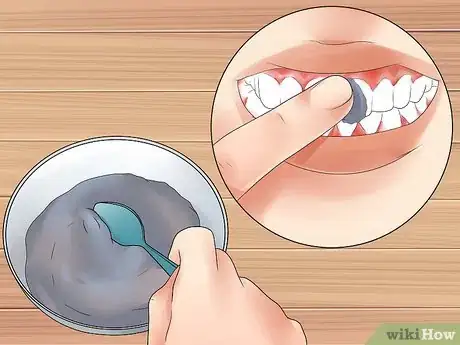
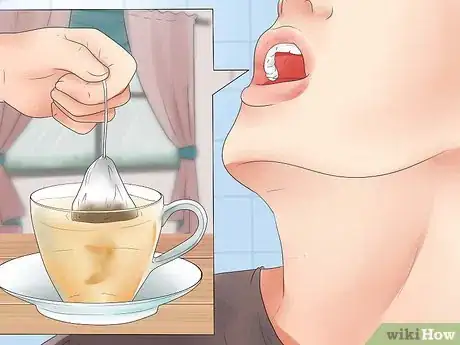


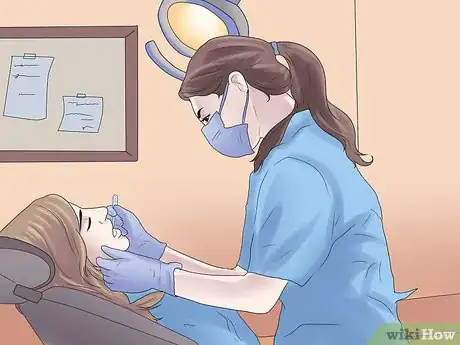

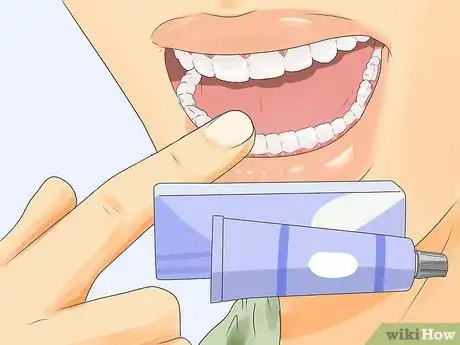
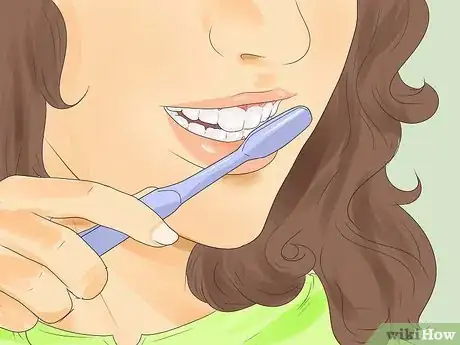
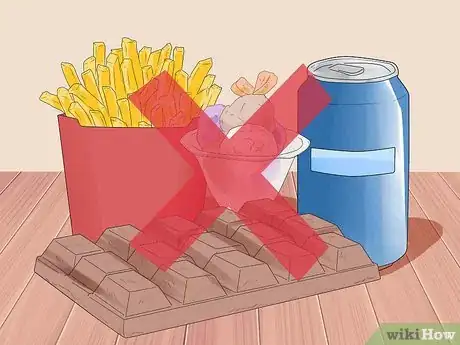

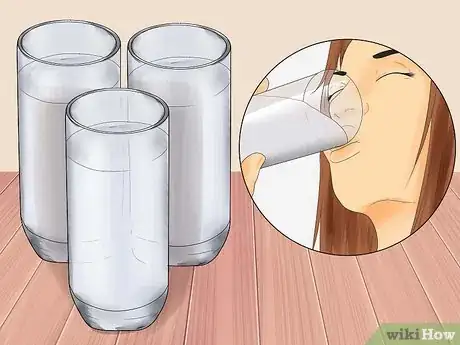
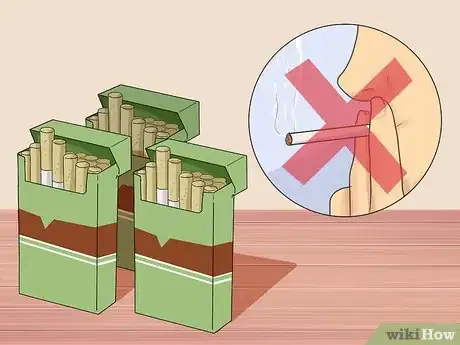



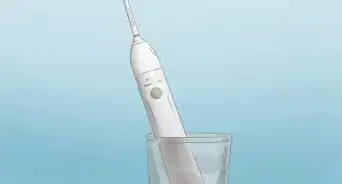





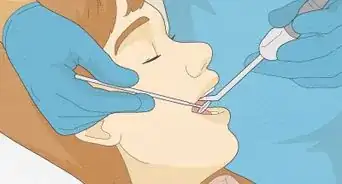
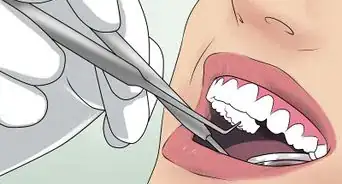
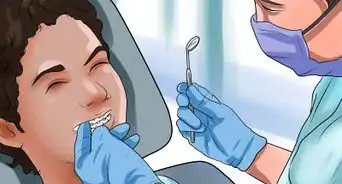









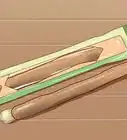

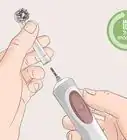



































Medical Disclaimer
The content of this article is not intended to be a substitute for professional medical advice, examination, diagnosis, or treatment. You should always contact your doctor or other qualified healthcare professional before starting, changing, or stopping any kind of health treatment.
Read More...